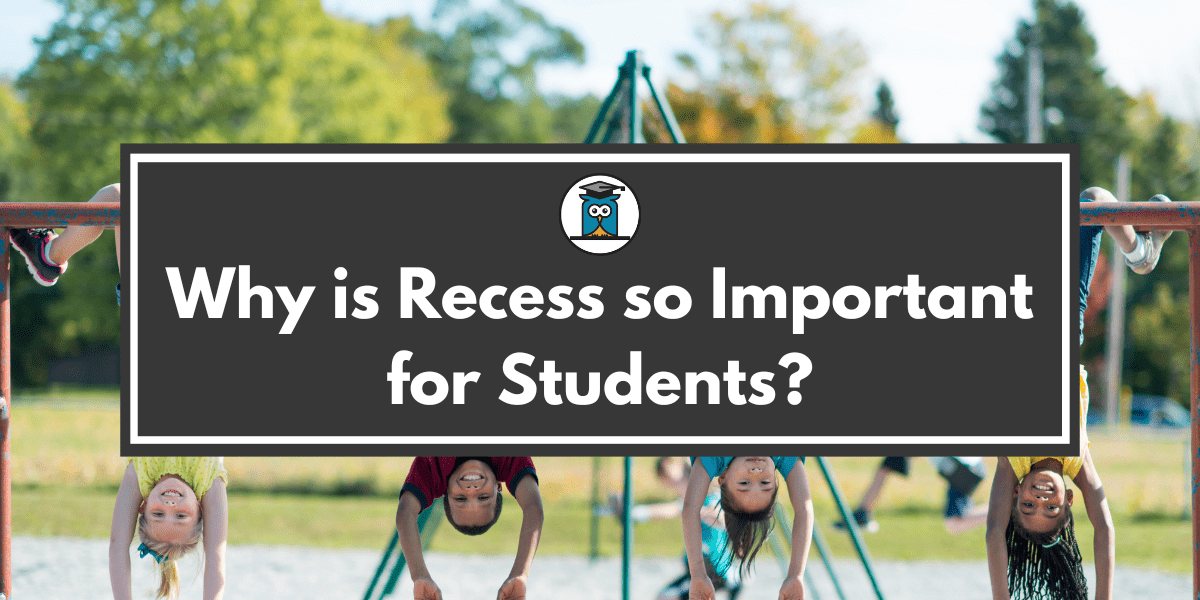Did you know that, since 2001, the average weekly recess duration has declined by 60 minutes?
Meanwhile, only nine states currently require that schools provide daily recess.
Why recess duration has been on the decline
In 2002, President Bush signed the bipartisan No Child Left Behind Act (NCLB). And this consequently set off a cascade of changes in the U.S. education system.
The NCLB act aimed to make America’s education system more internationally competitive through introducing achievement goals based on standardized tests in reading and math. If schools missed their achievement goals, they would face potential penalties, such as losing funding.
In the early 2000s, U.S. states also began implementing Common Core State Standards, which are invariable educational standards for K-12 math and ELA. The purpose was to standardize student achievement in math, literacy, and language arts—achievement based on scores from several required tests.
And just like in the case of the NCLB act, if schools didn’t meet common core standards, they risked budget/funding cuts.
As a result, teachers felt increased pressure to ensure that students were performing well on standardized tests. Faced with cuts, and wanting to cram as much academics into the day as possible, teachers questioned whether recess was a valuable use of resources.
But the thing is, cutting down recess time (or eliminating it) is actually counterproductive.
Recess: a non-negotiable for students
Think about how you feel after a good night’s sleep—now compare that with how you feel after studying all day, sending emails for hours, or sitting in on meetings from 9:00am – 5:00pm.
Unfortunately, our society often views resting as a weakness. It seems that we sometimes fall victim to the belief that, the more you put in, the more you get out. But the flaw in this thinking is that, in order to function at maximum capacity, you actually need to give your brain—and body—a good amount of TLC.
At this point, you’ve probably heard about the necessity of taking breaks when studying, working, or working out. As it stands, research shows that taking breaks allows you to increase your energy, productivity, and ability to focus.
So why do we question whether or not students—who exert brain power all day and then proceed to go home and do homework—actually need recess?
Notably, recess provides students with time to process new information they’ve learned—which ultimately improves their academic performance. To grasp how this works, it’s important to understand physical activity’s effect on the brain.
Active movement engages your brain’s prefrontal cortex (which plays a key role in cognitive function), and in turn forms connections between the two sides—creative and analytic—of your brain.
Additionally, research demonstrates that when you take breaks, your brain carries out a very important task: helping you process and make sense of all the information taken in.
Plus, breaks promote divergent thinking, which is the ability to explore several possible solutions.
Schools want to boost student achievement—but eliminating recess is seemingly doing more harm than good.
How does recess benefit students?
Physical activity improves cognitive function
In order to thrive in the classroom, students need more than just discipline. For quality learning to happen, students need concentration.
Research has shown that there is a positive relationship between exercise and cognitive ability.
Providing sufficient recess time (at least 20 minutes per day, according to the CDC), enables students to process what they’ve learned—and prepare their brain for the next bout of learning.
Meanwhile, when students don’t have enough time for unstructured play, they end up losing focus in class, and ultimately failing to retain information.
As noted, when physically active, you engage your brain’s prefrontal cortex—and this allows you to build new neural connections between the brain’s two sides. Consequently, building these connections enables you to more effectively process new information.
Moreover, studies have demonstrated that after recess, children are more alert and in better cognitive shape.
So if we want students to function at maximum capacity, it seems that providing adequate recess time is a no-brainer.
And so, recess indirectly improves academic performance
A study published in Brain and Cognition highlighted how physical activity can improve childrens’ ELA skills. Specifically, the researchers found that the children who were more aerobically fit scored higher on reading and spelling tests.
According to research from PlayCore and SHAPE America, students who are more active throughout the day are 20% more likely to earn an ‘A’ in math or English.
Recess doesn’t only help students get their energy out—it actually helps them improve their performance in school. And thus, recess also helps schools achieve their school standards. Evidently, it’s a win-win.
It also helps students develop social & emotional skills
Rather than sitting and trying to pay attention to the teacher, recess provides the space for students to interact with one another and in turn, develop social skills.
That is, recess activities often require sharing, taking turns, listening, and negotiating—all of which are critical to developing social-emotional skills.
And, recess can help students reduce stress
There’s a reason why, after walking in the sun, you might feel more prepared to tackle the day ahead.
According to a 2016 study, sunshine can have a major impact on your mood and wellbeing—and researchers have proposed that this is due to how sunshine may increase the body’s release of serotonin, the natural “feel-good” chemical. 
Sure enough, research has shown that sunlight exposure can improve mood—but also, it can boost cognition. And for students, reaping these benefits may be critical to their academic success.
Often, students are moving around at recess—playing tag, jump-rope, basketball, etc. In addition to sunlight, active movement also benefits students. Exercise can help students mitigate stress which improves engagement and focus in class.
Physical activity reduces your body’s levels of adrenaline and cortisol (major stress hormones). In addition, exercise stimulates your body’s production of endorphins, the natural painkillers and mood uppers.
On top of that, recall what sunlight contains? Vitamin D. And vitamin D improves brain function.
So during recess, the advantages of both exercise and sunlight exposure, in conjunction, greatly benefit students.
Finally, recess may enhance students’ creativity
When you exercise, you stimulate a region called the Brain Derived Neurotrophic Factor (BDNF), which promotes brain cell growth in the hippocampus— in turn preserving cognitive function.
But the BDNF also plays a role in long-term memory, imagining the future, and creativity. So, research suggests, the cell growth that occurs in the hippocampus supports creativity in addition to cognition.
Seemingly, the mere nature of recess can inspire creativity within students.
In the classroom, students often must follow regimented instructions, while on the playground, they are left to their own devices, free to use their imaginations as they desire.
Having that space where they can create their own rules provides the opportunity for students to tap into their creativity. And after releasing their creative energies on the playground, students will often be more present, and less stressed, when they return to the classroom.
Final thoughts
That being said, it’s time to stand up for our students.
It’s definitely disheartening that it’s not a rarity to see teachers taking away recess as a punishment.
But when it comes to recess benefits for students, the numbers don’t lie (see below), and hopefully, that’ll become apparent to more and more educators.
- A 2009 study found that children who had at least one recess period daily had better behavior.
- A 2010 report found positive associations between recess and academic performance.
- A 2016 study found that young boys who spent more time sitting and less time playing didn’t progress as quickly in reading and math.
The bottom line: recess benefits students, which benefits schools, which benefits tomorrow’s world.








